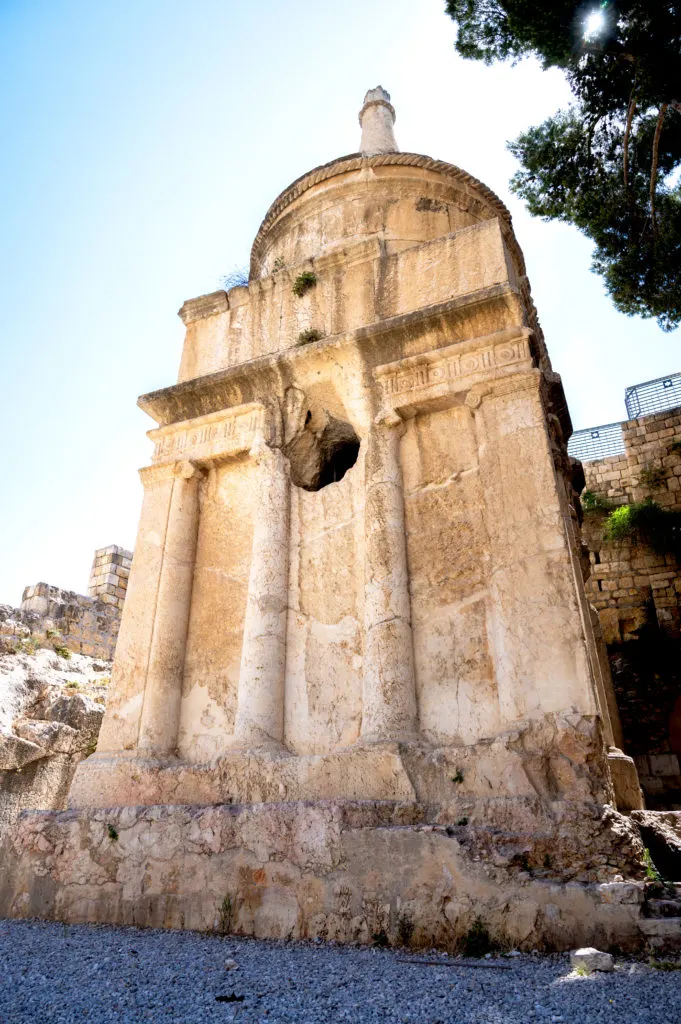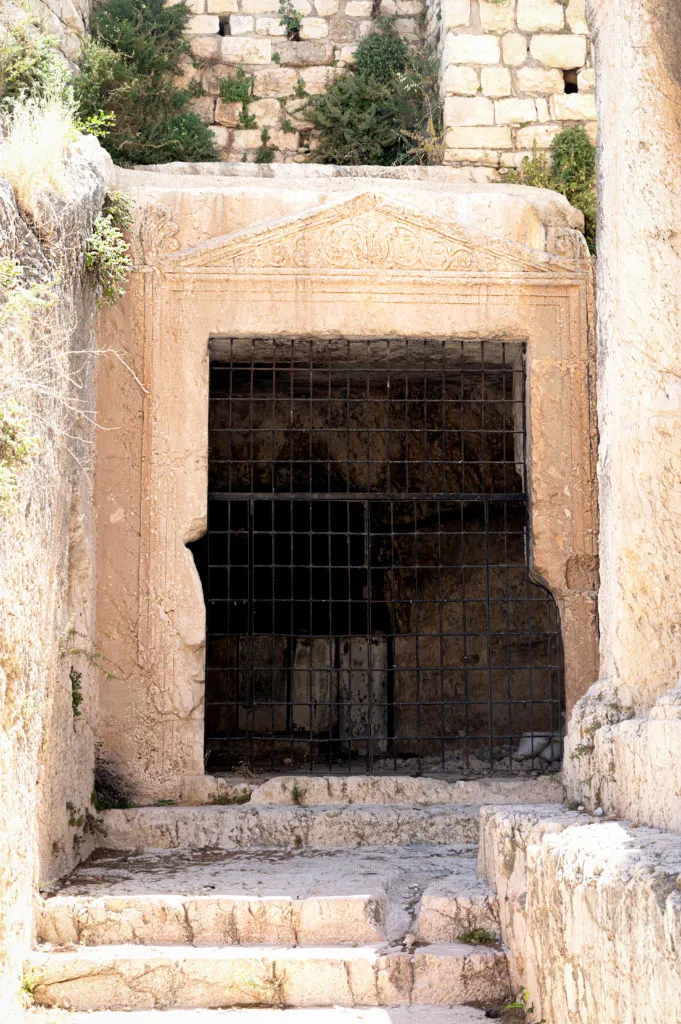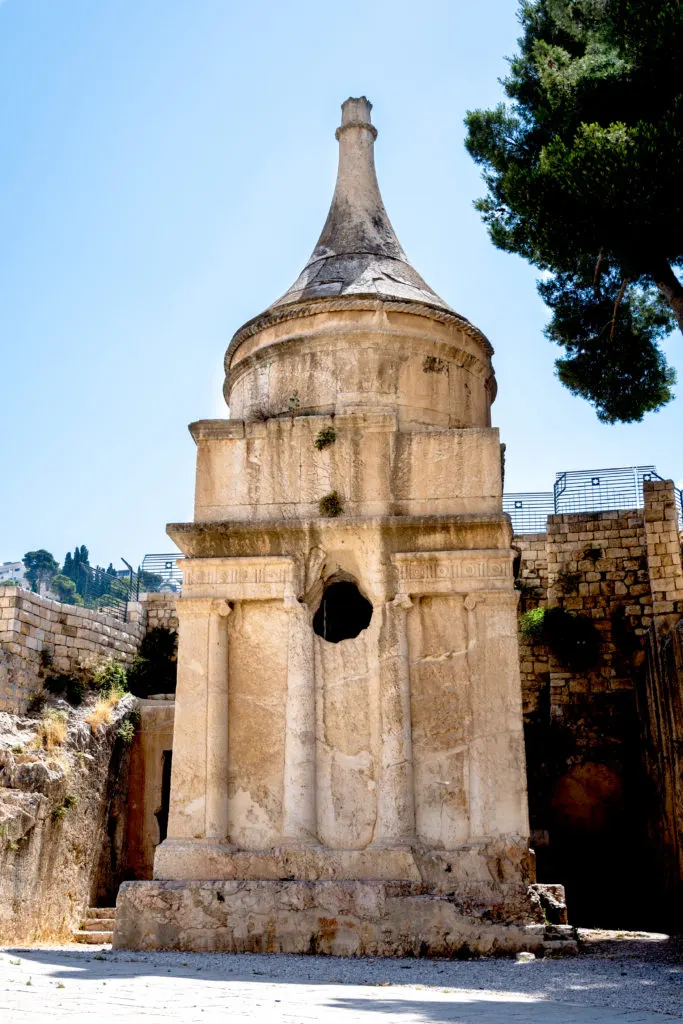Tomb of Absalom, Absalom’s Pillar, or Yad Avshalom, is an ancient rock-cut tomb with a conical roof located in the Kidron Valley in Jerusalem.

The name of the tombstone indicates a tradition that links it to a tombstone built by Absalom, the son of King David.
However, this is impossible because it was built during the late Second Temple period. In contrast, Absalom lived before his younger brother Solomon became king and built the First Temple.
The Christian pilgrims during the Middle Ages mistakenly thought this was Absalom’s Pillar. The name stuck to this day, even though we know it was built 1000 years later.
These incorrect assumptions were not uncommon by Christian pilgrims and Crusaders.
They also assumed the Tower of David was King David’s palace, but it is actually a citadel built over 2,000 years later. In fact, King David’s palace was discovered in the City of David just above the Kidron Valley.
In fact, modern scholars believe that may actually be the tomb of King Agrippa, Herod’s grandson.
In part, this is because the nearby Jehoshaphat Cave is a very large and ornamented cave that was used for family burial.

It is believed by some to be the resting place of Agrippa’s family members, while he and his wife were buried in the so called “Tomb of Absalom.”
The tombstone was hewn from the surface of the cliff with one side facing out, while the other three sides are surrounded by bedrock.
The lower section of the tombstone was quarried and the upper section was contracted.
The quarrying style combines a variety of architectural traditions characterizing Jewish art of the late Second Temple period.

The tombstone consists of two main parts. The lower part, which was hewn from the bedrock, and the upper part, built of ashlars .
The main structure is decorated with classic Greek elements, like ionic styled pillars and a doric frieze (the decorative band above the pillars). However, it also features an Egyptian cornice (decorative moulding that crowns a building).
The upper section has a rope-like decoration on the bottom of carved cone. The tippy top is a stone hewn in the shape of a lotus flower with six petals.